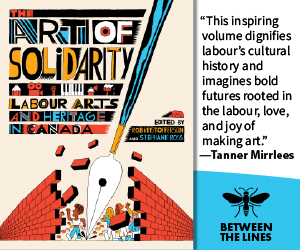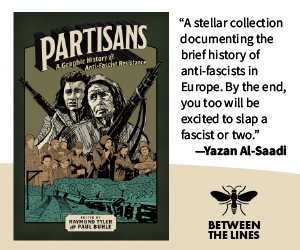Amazon donation to UofT follows ‘greenmail’ strategy of media companies
Edge: Corporate endowments to Canadian universities should subject any resulting research to heightened scrutiny
-_800_529_90.jpg)
Photo by Robert Scoble/Flickr
Most journalists are so overwhelmed nowadays by the daily grind in short-handed newsrooms—a phenomenon Dean Starkman dubbed “the hamster wheel”—that they don’t have much time for investigative reporting. That makes it even more delicious when an enterprising writer occasionally pulls back the curtain on how things really work in Canadian politics and society, where money talks and you know what walks. That’s exactly what Martin Patriquin of The Logic did last week on Amazon’s secretive $600,000 donation to the University of Toronto law school to study competition in Canada.
That our competition laws are ineffective is well known to most Canadians by now, especially those who buy groceries or surf the Internet. Even the head of the federal Competition Bureau has called for it to be given more enforcement powers. Powerful forces are now lining up to fight reform of the Competition Act, with the far-right National Post editorializing against it regularly, while conservative think tanks similarly rush to protect the country’s lush system of monopoly profits.
A more covert level of influence peddling lurks just beneath the surface of public discourse in academia, which is shamefully subject to what have been called “greenmail” endowments designed to legitimize one side of a debate or the other. It has badly infected my field of study for more than 25 years and my role in exposing it may help to explain why my teaching career has been spent mostly outside Canada.
The controversial business model of convergence, which saw joint ownership of newspapers and television as the way of the future, swept the country just as I was completing my doctorate at the millennium. I had hoped to land a faculty position at the new UBC School of Journalism upon graduation, especially as I had met its founding director through a connection at Ohio University, where I was studying, and I was already doing some curriculum development work for her. After I returned home to Vancouver to research my dissertation on the Pacific Press newspaper monopoly, however, I became increasingly disturbed by Donna Logan’s advocacy for convergence, which was taking media ownership concentration in Canada to another level.
“What gets me upset,” Logan told the Vancouver Sun in 2000, “is when people automatically say concentration of ownership is bad and divestiture is good.” She followed that with a column in the Canadian Association of Journalists magazine Media. “If the dangers of media ownership concentration were as dire as some critics would have us believe,” Logan wrote after Canwest Global Communications added both Vancouver dailies and most of the area’s community newspapers later that year to the two television stations it already owned there, “the people of Vancouver would be rioting in the streets.” What I told her in response ended any chance I might have had for a job at UBC.
I then started to peel back the seamy underbelly of academic influence in Canadian media ownership regulation, and it proved a fertile if unsavoury avenue of research. The country’s new “kings of convergence,” as author Gordon Pitts dubbed them, successfully fought efforts by the Canadian Radio-television and Telecommunications Commission (CRTC) to keep their newspaper and television newsrooms separate in order to preserve what little editorial diversity then remained in Canada. Logan testified to the benefits that convergence would bring to news gathering. “One of the things that has always disturbed me about journalism in Canada is that there were too many reporters chasing so few stories,” she told the CRTC. “Converged journalism offers an opportunity to break out of that mould by freeing up reporters to do stories that are not being done and are vital to democratic discourse.” Her testimony had been covered by the Canadian Press news service, I found, but for such a hot topic its story was oddly published in only one newspaper—the Regina Leader Post.
My research also found that her school, which had been absurdly named after the donor Sing Tao newspaper chain, had recently received a $500,000 endowment from Canwest to fund an annual Asper Visiting Professor. It continues to this day despite Canwest imploding in 2009 along with the convergence model and the Sing Tao name being stripped from the school after a circulation scandal in Hong Kong. I outlined what I found in an academic journal article and also included it in my 2007 book Asper Nation, which a reviewer for the Globe and Mail called “a must read for anyone who aspires to active and informed Canadian citizenship.” I also spilled the beans on a radio talk show in Vancouver, which earned me a lawsuit threat from Logan’s lawyer, who was also her media law professor, while I was teaching in Singapore.
I not only ignored it, but I persisted in digging into the rat’s nest of corporate influence that pervaded Canadian journalism schools. I traced it back to the CRTC’s system of “public benefits” payments, which by the 1970s required that 10 percent of the purchase price of any television broadcaster be devoted to worthy purposes, usually Canadian content. The head of journalism at Western University provided a rare glimpse into the growing problem in a 1998 Globe and Mail column he wrote about the dilemma brought by a $1 million donation from Rogers to fund an endowed chair at his school a few years earlier. “When journalists subsequently asked me to comment on the Rogers takeover of [magazine publisher] Maclean Hunter, all I could do was draw their attention to the donation,” wrote Peter Desbarats. “They understood right away that I had been, to express it crudely, bought.”
Public benefits money increasingly found its way into schools of journalism at the millennium, and their faculty members lined up to support convergence. The purchase prices were enormous, including Bell paying $2.3 billion in 2000 for the CTV network, which required benefits payments of $230 million, before partnering it with the Globe and Mail as Bell Globemedia. Of that, $2.5 million went to fund an endowed chair in convergence at Ryerson University, which changed its name to Toronto Metropolitan University in 2022. Another $3.5 million went to fund a Canadian Media Research Consortium founded by Ryerson, UBC and Université Laval which mostly produced research useful to media ownership. I detailed my findings in a 2013 article in the Canadian Journal of Communication as my career lurched from Texas to Fiji, where the military regime soon showed me the door for speaking out against its repressive media regulations.
My persistence has earned me occasional plaudits, but more often brickbats from Canadian media and outright antagonism from some journalism professors. One review of my 2016 book The News We Deserve by an instructor at Toronto’s Humber College was particularly defensive, arguing: “To imply that faculty who receive such funding would… skew their research findings to somehow suit their corporate funding overlord(s) presents an affront to all of academe.”
Since my career ended prematurely in Malta with the pandemic, however, I have nothing left to lose and nothing better to do than to write about what I have learned in the occasional book and in columns for this publication, which is seemingly the last one in Canada willing to touch my work. I am thus here to tell you from hard experience that corporate endowments to Canadian universities should subject any resulting research to heightened scrutiny in regulatory debates.
Marc Edge is a journalism researcher and author who lives in Ladysmith, BC. His books and articles can be found online at www.marcedge.com.










